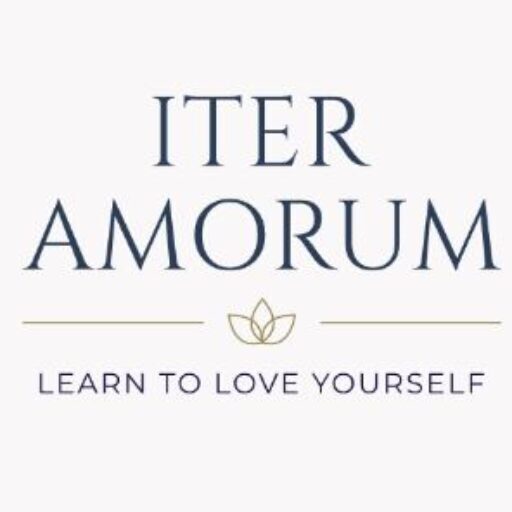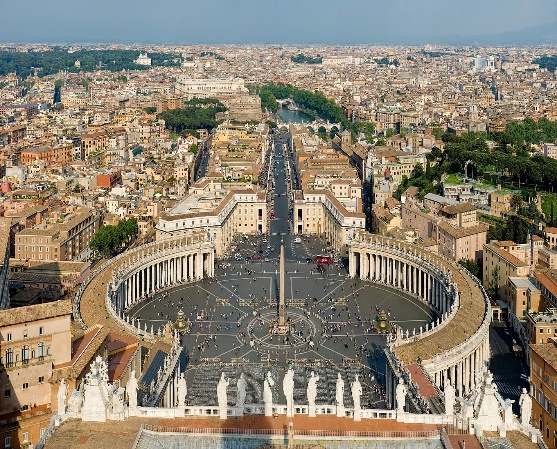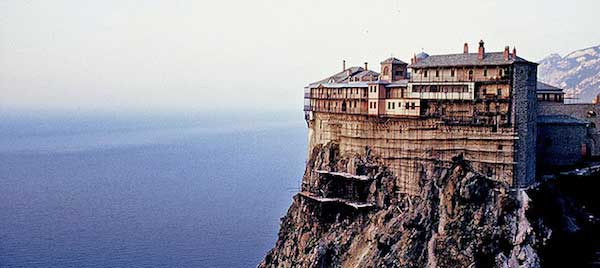Published on September 29, 2024
The Vatican and The Mount Athos – a schism that still exists
Religion: the belief in and worship of a god or gods, or any such system of belief and worship[3]
Country: an area of land that has its government, army, etc.[4]
Religion and politics have been working together for an individual or a group of people since the dawn of humanity, stipulating the idea that they are two powers gravitating towards one single purpose: the implementation of a set of rules that leads to a coagulated society. In this direction, The Garden of Eden, which can be considered the first state where humans inhabited, was conducted by a mere directive: the one that has forbidden Adam and Eve to eat from the tree situated in the middle of the land[5].
Following the same configuration, Rome has been founded by Romulus using two elements: the religious (Romulus spotted twelve vultures, while his brother, Remus, saw only six) and the physical one (the future king marked the land around Palatine Hills with a so-called wall)[6] – which, in this context, it is the configuration of the future Rome seen as a state with borders and rules.
Before this moment, we can turn to Ancient Egypt, where religion and politics were the main pillars of the society erected on the idea that the pharaoh was the pure representation of God[7].
Moving forward, America, since its inception, functioned based on religion and politics[8], which help each other, supported each other, and gave its leaders the feeling of doing the right thing, and, more than this, ensuring the winning of the elections (because why not to use religion in a political speech when humble people had nothing but God to tame their needs).
There are countries around the world that are, to a greater or lesser extent, examples of the deep connection between religion and politics or of how religion can act as a social force that governs the whole society, and Middle Eastern countries are a very good illustration of this image, sometimes to the detriment of their citizens or, worst, as a force that can disturb the whole world.
But closer to us, in the centre of Christianity, two countries developed right inside of their inner part an enclave with its own rules, its people and even its own politics everything based on a strong religious belief that qualifies that territory as an independent. Saying these, there are two territories that drew my attention when we are talking about religion as a political and social force: the Vatican and Mount Athos, which formations are the results of a great event that put its mark on Christianity – The Great Schism.
Both located in Europe, the Vatican in Italy, and Mount Athos in Greece, are part of the countries they are geographically situated, though the Vatican presents itself as “the smallest country in the world”[9], while Mount Athos is presented on the website https://whc.unesco.org/ having “a peculiar self-administered system under Hellenic Constitutional Law. While the sovereignty of the Hellenic State remains intact (article 105), management is exercised by representatives of the Holy Monasteries, who comprise the Holy Community (article 105)”[10]. Therefore, the Vatican and Mount Athos represent independent regions that can manage themselves using their own legislative or religious systems, but that, as we will see, have a tremendous impact on the Christian communities around the globe, whether they are Catholics or Orthodox.
Having in mind the economy of this paper, we will approach in brief some domains that will give an idea about how two small territories had and have such an extraordinary impact on the Christian world, right from its beginning, situated in 313 A.D when the emperor Constantine jointly with Licinius issued the Edict of Milan[11] that tolerated Christian religion but did not name it yet official and continuing to these present days when, unfortunately, the Christian world split more and more, in many factions and many cults.
Strictly relating to historical contexts, there is not certain data that can point clearly to when the Vatican and Mount Athos has been formed, though some studies can discern around which year or which period these two Christian centres appeared, the fact that can explain their future implication in the whole world’s functionality.
The Vatican, as a state, emerged after the Lateran Treaty, signed on 7th June 1929, between the Holy See and Italy, whose purpose was to ratify His Sanctity with territorial independence that already existed in the case of Saint Peters Basilica and its surroundings, including the papal palate and other locations[12]. While this document was just a pure formality that recognized officially what was already a reality (the Holy See have been stripped by its States of Church during the years of revolutions and war), what is important is the fact that the Italian government acknowledged the sovereignty of Pope over this small territory that gave to its occupants political and social independence[13].
Mount Athos’s formation, by comparison with the Vatican State, has not had an official document at its base, but there are significant facts that state the independence of this Greek territory. The most important of them is the Constitution of Greece, ratified by the Hellenic Parliament, as stipulated in Chapter 3[14]:
“The Athos peninsula extending beyond Megali Vigla and constituting the region of Aghion Oros shall, by its ancient privileged status, be a self-governed part of the Greek State, whose sovereignty thereon shall remain intact. Spiritually, Aghion Oros shall come under the direct jurisdiction of the Ecumenical Patriarchate. All persons leading a monastic life thereon acquire Greek citizenship without further formalities, upon admission as novices or monks”
– to be noticed the formulation “ancient privileged status” that recalls the beginnings of Mount Athos (Ἅγιον Ὄρος – Holly Mountain) in the Byzantine Empire, as a holly community of monks that was somehow encapsulated in its own rules.
While about the Vatican one can read in the press or see documentaries that grew the popularity of the Papal State, about Mount Athos people did not hear so much nor see much, leading to a mystery that increased over time, especially knowing that the monks forbade the presence of women on the mountain to preserve the celibacy vows of its inhabitants. Though there is one thing that links together these two territories and that is the presence of God in everything their occupants do.
Christianity, as this religion configured itself at its beginning, emerged from an act of supreme sacrifice throughout God gave His own Son to save humanity and to wipe out its sins facing the down of a few things that were an absolute novelty: life after death, the concept of Heaven, the idea of love and forgiveness.
At first view, both Vatican and Mount Athos can be seen as centres of Christianity, where ordinary people can find serenity, a way to salvation and a path to a spiritual life exactly as God ask from us. But, in a detailed analysis, these holy places that have their own rules and that stipulate their own truth are the pure illustration of what power, politics and dominance can do, everything under the umbrella of the Christian religion.
In his book The Myth of Religious Violence: Secular Ideology and the Roots of Modern Conflict, William Cavanaugh exposed the case of religious wars of the sixteenth and seventeenth centuries in Europe which were triggered by doctrinal differences between Protestants and Catholics that evolved into acts of murders[15], a historical fact that was solved by the apparition of the state as we know it today, switching the authority from the church to the statal rules, secular society that put religion under a private life or no?
Though the Vatican implies itself today in various international conflicts that require a neutral presence to be solved[16] there remains the history that has the stains of blood, the solitude, and the arrogance that Christian Orthodox are better than Catholics, and they are better than Protestants, and Northern Ireland is better than the Republic of Ireland, for example.
The strange case is that in the Republic of Ireland young people refuse to go to church on Sundays, more than this, on the 24th of May 2018, Irish Times announced that “Ireland becomes the first country to approve same-sex marriage by popular vote”[17], not that this is a bad thing, but in the 80s there are some data that said that Ireland was, perhaps, the most Catholic country of the world[18].
Coming back to the Vatican, we can observe the strange relation of this small territory with the machinery of American politics, despite the belief that Catholic Church is present everywhere and can solve many problems (Gaetan, 2021).
In 1960, after he is elected the first Catholic president of the United States of America, J. F. Kennedy stated that he will put a clear separation between the state and the church[19] dissociating himself from religion, though in time we will see that religion became a very strong part of politics in America. [20] Interestingly, later in time, another candidate, Clinton, recalled his connection with Catholicism during a speech for being afraid of not losing the election like Jimmy Carter almost did[21] – and this happened after Catholics were more vocal than before in American politics.
As a result of Pope John Paul II’s visit, the popularity of Catholics grew in America, but as a sort of weapon that has been used to promote political concepts and to attract mass sympathy. The same text (David Scott Domke and Coe) stipulated that even in Italy, which must be heavily Catholic, “fewer than three in ten people said religion was very important”.
Despite of numerous implications of the Holy See in charity and international issues, there is a feeling that Vatican City is a territory of the chosen ones that can create a sense of elitist belonging[22], though more than 50 percent of the Christian population declared to be Catholic denomination.
Mount of Athos identifies itself as a center of Easter Orthodoxy promoting, like Vatican City, the same Christian values: love, compassion, prayer, and charity, though the Greek enclave it is more isolated and the simple visiting this place is not just the easy stuff.
Social and political implications of the monk community that resides on Mount Athos are not so visible and not so mediated but during the time, both Greek and Russian leaders supported the growth of the spiritual life on Holly Mountain and wanted to maintain its habits as they were since the Byzantine Empire, around 800 A. D.
There is a saying, especially in the bosom of Eastern societies (countries such as Romania, Bulgaria, Russia, Serbia etc.) that the monks have one simple yet enormous task to pray always for the good of others.
The isolation of the place sparked the interest of tourism and pilgrims that saw the visit to Holly Mountain as a vital accomplishment of their lives, so during the 50s and 60s the waves of visitors grew on the mountain leading to the idea that the peaceful times will end for the monks.
If in the case of Vatican City, the movement is developed in both directions into the city (through visitors – men or women) or out of the city (the cardinals are assigned to a specific region to supervise it and to give to its people their support), on the Mount Athos the motion is from outside the mountain to its interior, from the external societies into the monk’s community that are famous for their knowledge and skills[23], so they are visited by people in need (ordinary or famous, most of them politicians) who seek a piece of clever advice as a solution to their problem (see Speake and Ware).
In 2006 the Moscow Patriarchate organized a conference that cemented the relationship between Russia and Mount Athos, and two years after this event few papers delivered during the conference were published as recognition of Russian influence in this part of the world seen as the spiritual axis mundi of Eastern Orthodoxy, but this also started somehow a conflict between Greek authorities and Russian religious leaders.
What would have happened if Mount Athos had concluded a coalition with Vatican City? This may be considered an enormity in the actual political and social context but what is the reason for the Vatican to participate in a common project along to Grand Imam and Moses Ben Maimon that aims to “harnesses their teachings to forge a message of goodwill for future generations around the world”[24] and where are the leaders of Eastern Orthodox Churches?
The document signed on February 4, 2019, by Pope Francis and the Grand Imam during the Pope’s visit to Abu Dhabi, and simply called “Document on Human Fraternity”[25] brings together three monotheist religions: Christianity, Islam, and Judaism as part of the idea that they belong to a greater family of Abrahamic faiths, hence the name of the ensemble The Abrahamic Family House which includes a mosque, a synagogue, and a church.
Since its inception, Christianity was founded on the idea of unity, until an event that started the crumbled of this initial faith occurred in 1054 and was called ironically The Great Schism.
Now divided, these two churches chose some wise names to suggest their supremacy, their truth, and their type of believers, so the Western Church took the Greek name καθολική (which means “the universal” – βᾰσῐλῐκή καθολική – Catholic Church), while the Eastern Church chose a Greek name as well ὀρθός δόξα (orthos doxa – the right way, path, or faith).
Promoting a conservative vision, the Eastern Church and some of its priests are vehemently against any type of vicinity to the Catholic Church, the situation in which a common believer will not find a cure for his sufferance, especially if he is not in an Eastern country and he cannot attend a mass to an Orthodox Church.
Both Vatican City and Mount Athos are themselves very important centres of Christian faith, leading the world or approaching it to make it better or comfort it, but they are also images of solitude and self-sufficiency that can be seen as violent acts against the idea of fraternity.
https://en.wikipedia.org/wiki/Vatican_City#/media/File:St_Peter’s_Square,_Vatican_City_-_April_2007.jpg ↑
https://greekreporter.com/2012/08/26/visiting-mount-athos-the-land-of-monasteries/ ↑
https://dictionary.cambridge.org/dictionary/english/religion ↑
https://dictionary.cambridge.org/dictionary/english/country ↑
Genesis 2: 16 – 17 ↑
Titus Livius, Ab Urbe Condita, book 1 ↑
Hill, J.A., Jones, P. and Morales, A.J. (2014). Experiencing Power, Generating Authority Cosmos, Politics, and the Ideology of Kingship in Ancient Egypt and Mesopotamia. Philadelphia University Of Pennsylvania Press, pp 33-64. ↑
David Scott Domke and Coe, K.M. (2008). The God strategy: how religion became a political weapon in America. Oxford; New York: Oxford University Press, p. 6. ↑
www.thevaticantickets.com. (n.d.). Visiting Vatican City in Rome 2022 | Complete Guide. [online] Available at: https://www.thevaticantickets.com/vatican-city/. ↑
Centre, UNESCO World Heritage. “Mount Athos.” UNESCO World Heritage Centre, whc.unesco.org/en/list/454/. ↑
Florin Curta, and Andrew Holt. Great Events in Religion. An Encyclopedia of Pivotal Events in Religious History. 3 Vols. Santa Barbara, Abc-Clio, Inc, 2017, p. 33 ↑
Toschi, Umberto. “The Vatican City State: From the Standpoint of Political Geography.” Geographical Review, vol. 21, no. 4, Oct. 1931, p. 529, 10.2307/209364. ↑
Ibid. ↑
Hellenicparliament.gr, 2021, www.hellenicparliament.gr/en/Vouli-ton-Ellinon/To-Politevma/Syntagma/. ↑
Cavanaugh, William T. The Myth of Religious Violence : Secular Ideology and the Roots of Modern Conflict. New York, Oxford University Press, 2009, p. 10 ↑
Gaetan, Victor. God’s Diplomats: Pope Francis, Vatican Diplomacy, and America’s Armageddon. Lanham, Rowman & Littlefield, 2021. ↑
Caollaí, Éanna Ó, and Mark Hilliard. “Ireland Becomes First Country to Approve Same-Sex Marriage by Popular Vote.” The Irish Times, www.irishtimes.com/news/politics/ireland-becomes-first-country-to-approve-same-sex-marriage-by-popular-vote-1.2223646. ↑
“Ireland: The Most Catholic Country in the World?” Pulitzer Center, pulitzercenter.org/projects/ireland-most-catholic-country-world. ↑
David Scott Domke, and Kevin M Coe. The God Strategy : How Religion Became a Political Weapon in America. Oxford ; New York, Oxford University Press, 2010, p. 6. ↑
Ibid., p. 7. ↑
Ibid., p. 72. ↑
Reese, Thomas J. Inside the Vatican : The Politics and Organization of the Catholic Church. Cambridge, Mass., Harvard University Press, 1996. ↑
Speake, Graham, and Kallistos Ware. Mount Athos : Microcosm of the Christian East. Oxford, Lang, Peter, AG, Internationaler Verlag der Wissenschaften, 2012, p. 20, p. 23. ↑
“Abrahamic Family House in Abu Dhabi to Open in 2022 – Vatican News.” Www.vaticannews.va, 15 June 2021, www.vaticannews.va/en/vatican-city/news/2021-06/abu-dhabi-abrahamic-family-house-2022-human-fraternity.html. ↑
Ibid. ↑


